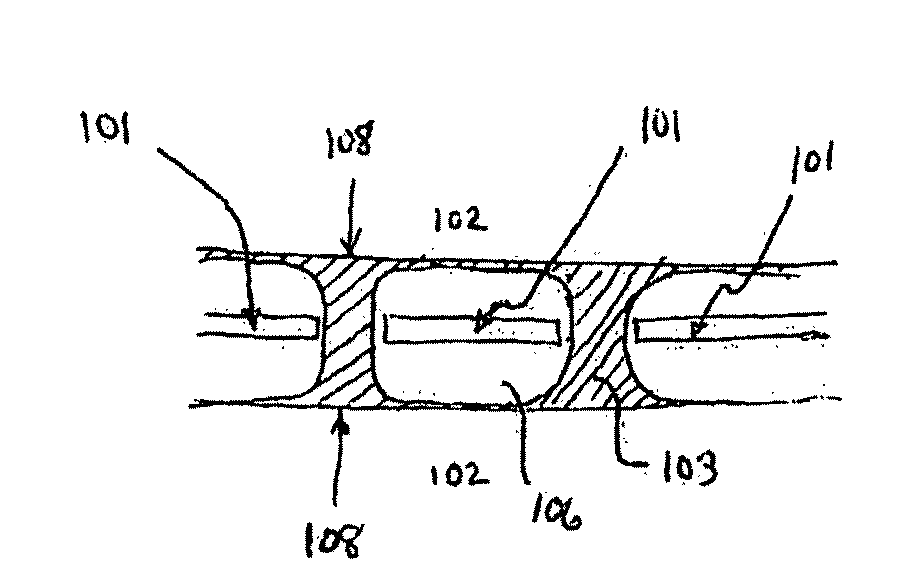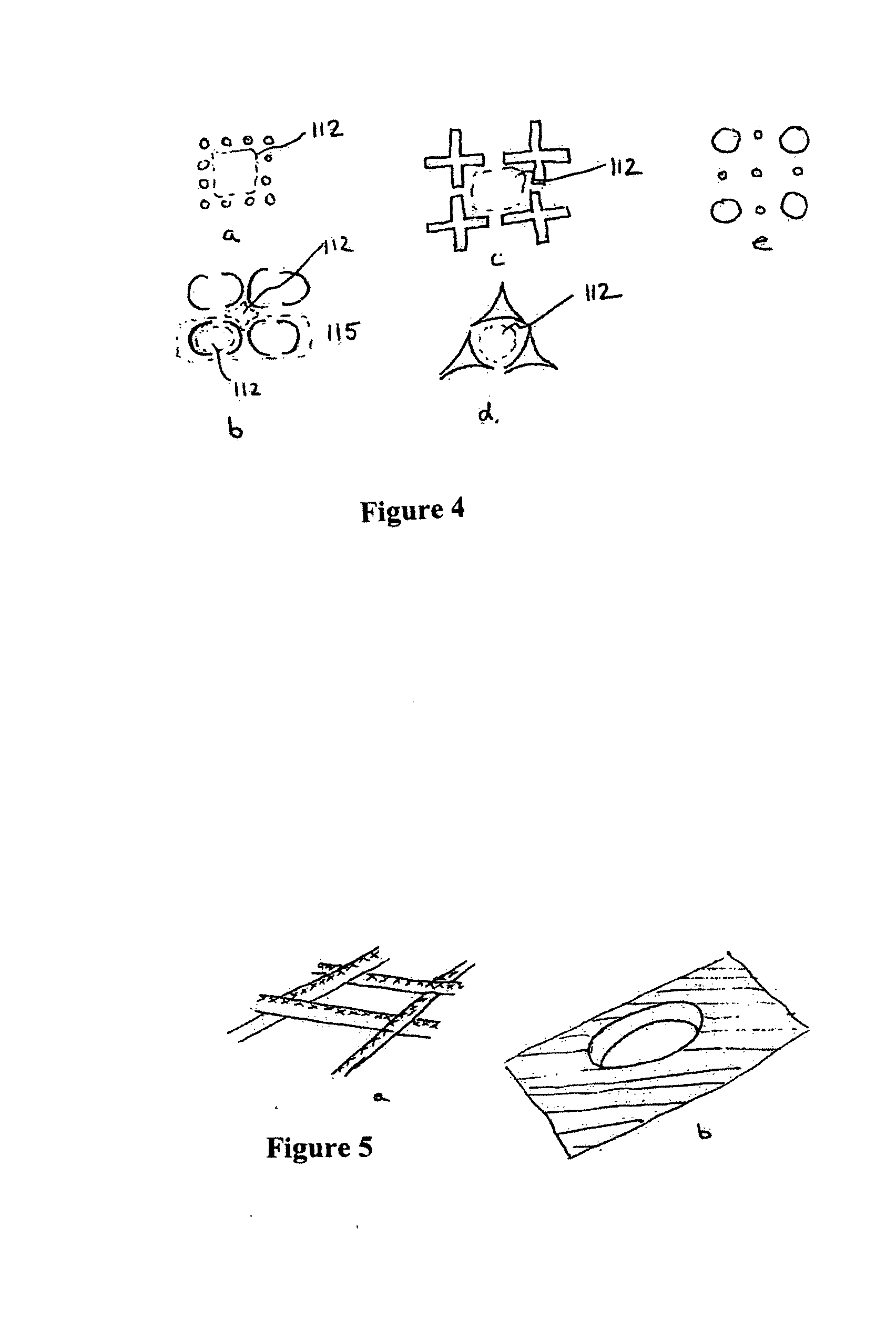Prosthetic for tissue reinforcement
a prosthetic and tissue technology, applied in the field of permanent tissue reinforcing prosthetics, can solve the problems of fibrosis on both sides of the mesh, many times thicker than the mesh itself, and the locus of tissue and implant is hard and painful, so as to prevent or lessen the extent of force-induced tissue thinning
- Summary
- Abstract
- Description
- Claims
- Application Information
AI Technical Summary
Benefits of technology
Problems solved by technology
Method used
Image
Examples
examples
[0076]Below are described specific embodiments of the present invention.
example a
Non-Absorbable Prepolymer
[0077]Seven hundred grams of Diol UCON 75-H-1400 (Dow Chemical), a poloxamer with about 25% PO and 75% EO subunits, are heated to 49 deg. C. and stirred under a continuous flow of argon for 24 hours. The prepared diol is cooled to room temperature (22 deg. C.) and 113.40 g of Toluene Diisocyanate added. The mixture is stirred under an argon blanket and the temperature of the solution is increased linearly to 60+ / −2 deg. C. over a two hour period. The mixture is maintained at these conditions until the concentration of NCO (isocyanate) drops to 2.95%. When this target is reached, 6.26 g of Trimethylolpropane is added, and the mixture stirred under argon at 60+ / −2 deg. C. until the % NCO reaches 2.21. This finished prepolymer is cooled under argon, and stored in a dessicator and away from light.
example b
Hydrogel Composition
[0078]A hydrogel useful for forming sheets of fiber reinforced prosthetic is obtained by mixing at room temperature equal parts by volume Example A, from UCON 75-H-1400, and isotonic saline.
PUM
 Login to View More
Login to View More Abstract
Description
Claims
Application Information
 Login to View More
Login to View More - R&D
- Intellectual Property
- Life Sciences
- Materials
- Tech Scout
- Unparalleled Data Quality
- Higher Quality Content
- 60% Fewer Hallucinations
Browse by: Latest US Patents, China's latest patents, Technical Efficacy Thesaurus, Application Domain, Technology Topic, Popular Technical Reports.
© 2025 PatSnap. All rights reserved.Legal|Privacy policy|Modern Slavery Act Transparency Statement|Sitemap|About US| Contact US: help@patsnap.com



